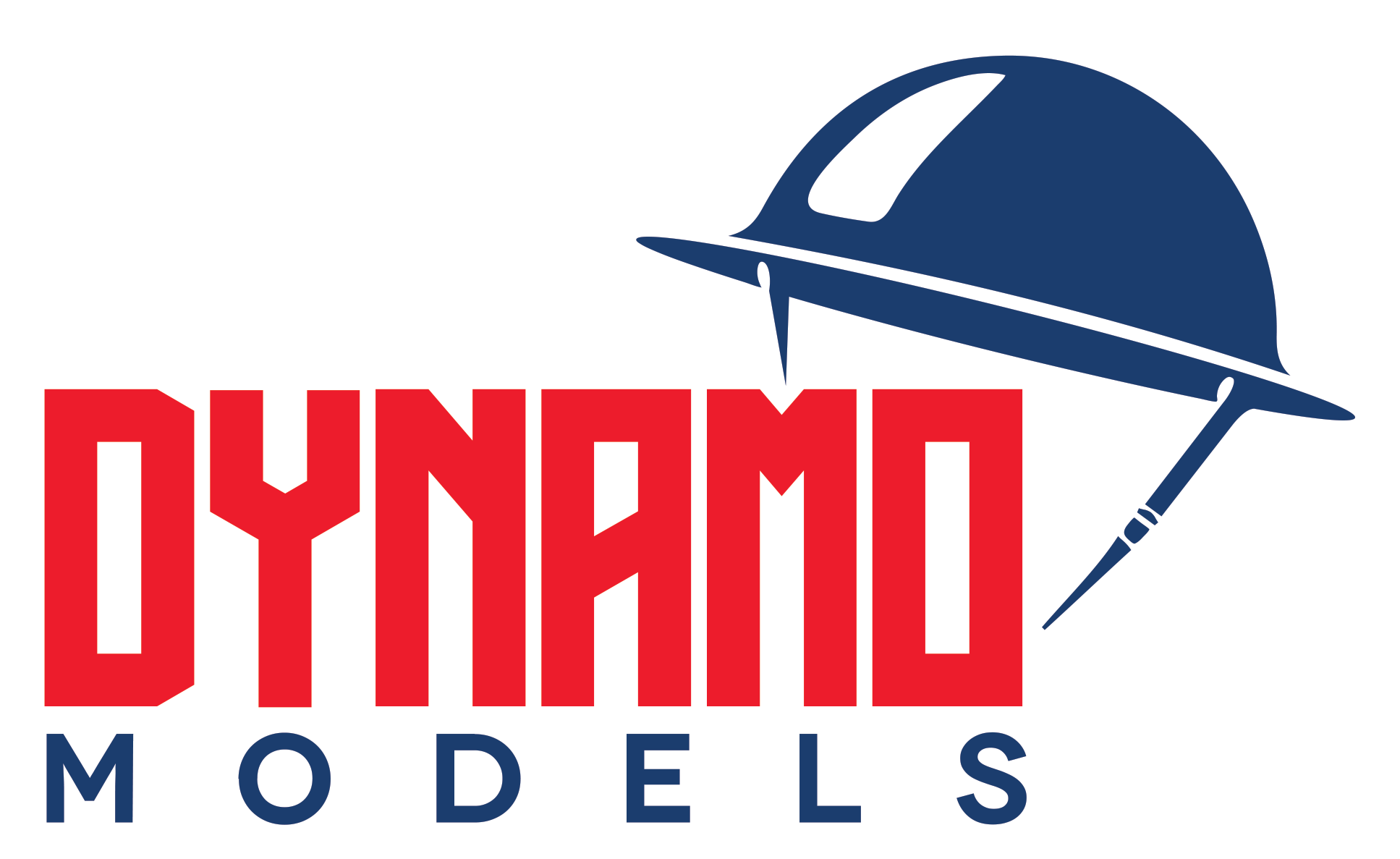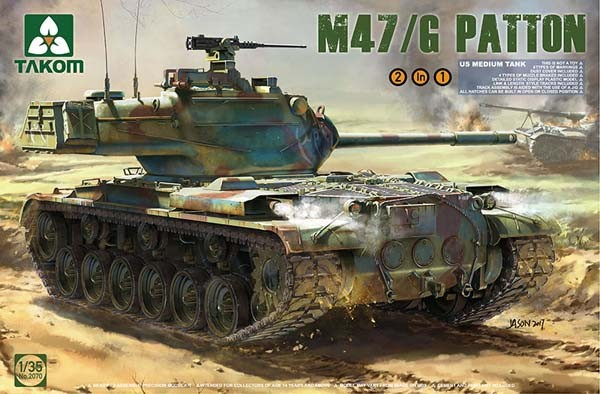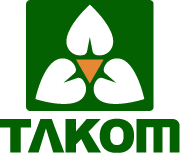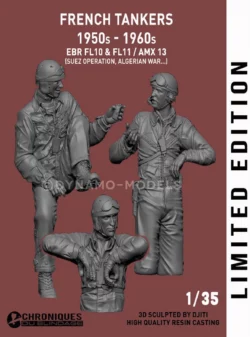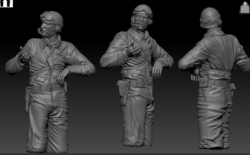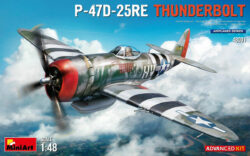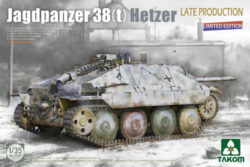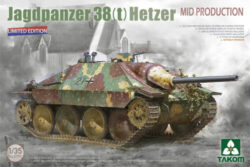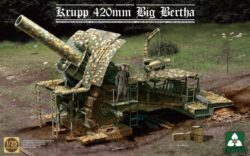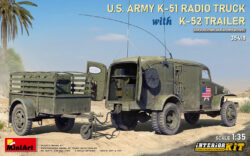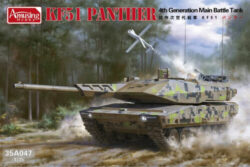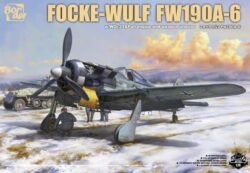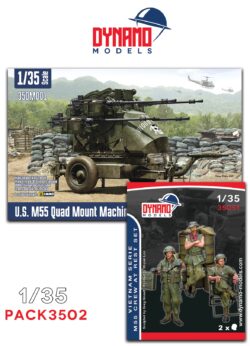Takom 2070 – M47/G Patton 2in1
42,50€
– Plastic model kit to build a M47/G Patton 2in1 1/35 Takom.
– Scale plastic kit include photo-etch, clear parts and decals.
– Model to be assembled and painted. Glue and paint not supplied.
1 en stock
The Takom 2070 kit is a 1/35 scale model of the US M47/G Patton Tank, offering an intricate build experience with options for two distinct versions of this classic American tank. Known for its operational role during the Cold War, the M47 Patton was widely used by U.S. allies. Takom’s model captures these details with precision and flexibility for custom builds.
Detailed Key Features:
- 2-in-1 Build Options: Allows the modeler to construct either the standard M47 or the German M47/G variant, expanding the versatility and historical accuracy.
- Length-and-Link Tracks: Comes with an alignment jig, ensuring precise track placement and easy assembly. These links are molded with accuracy for a more lifelike look.
- Cast Texture on Turret and Hull: Fine casting details on the turret and hull mimic the rough appearance of the real tank, adding a rugged, realistic texture.
- Multiple Muzzle Brake Options: The kit includes four distinct muzzle brake choices, allowing for various historical configurations, adding to its customizability.
- Mantlet Cover Option: Offers the flexibility to model the mantlet cover on or off, giving the tank an added layer of visual interest depending on the builder’s preference.
- Detailed Marking and Paint Guide by Ammo by Mig Jimenez: A paint and marking guide is provided for six different historical vehicle markings, enhancing the kit’s appeal for accuracy-oriented modelers.
- Clear Parts: Includes clear plastic parts for periscopes, enhancing realism by allowing modelers to depict clear vision blocks for crew members.
This kit is molded in light grey, making it ideal for base painting and weathering. It is an excellent choice for intermediate and advanced modelers looking for an authentic and customizable Patton tank.
M47/G Patton:
The M47/G Patton is a variant of the M47 Patton tank, originally developed in the United States and later modified in several countries, including Germany, for improved combat performance and longevity in service. Named after General George S. Patton, this medium tank was designed in the early 1950s as a successor to the M46 Patton and intended for service in the Cold War. Although it was primarily used by NATO countries, including the United States, Germany, and Italy, the M47 also saw widespread distribution to many nations under U.S. military assistance programs, serving in various conflicts worldwide.
Design and Armament
The M47/G Patton features a welded hull with a cast turret, providing a robust yet maneuverable structure suitable for a range of combat environments. It is powered by a Continental AV-1790-5B V12 gasoline engine with 810 horsepower, giving it a top speed of around 48 km/h on roads and a range of about 130 kilometers, though fuel consumption was relatively high. The tank is armed with a 90 mm M36 main gun, capable of penetrating most armored vehicles of its time, as well as a coaxial 7.62 mm machine gun and a .50 caliber heavy machine gun mounted on the turret for anti-air and infantry suppression.
Modifications and the “/G” Variant
Germany’s M47/G variant included a number of upgrades to improve the tank’s combat effectiveness and reliability. These modifications included improvements to fire-control systems, allowing for greater accuracy in targeting and engagement. In some versions, the M47/G was also fitted with night-vision equipment and improved communications systems, which were essential for modern combined-arms operations. Additional armor plating in some modified models provided enhanced protection against high-explosive rounds, although this addition impacted the vehicle’s weight and mobility slightly.
Operational Role and Service
Initially designed for front-line service, the M47 Patton saw limited combat under U.S. forces but was heavily used by other countries in various conflicts. In Europe, especially in Germany, the M47/G variant played a significant role in NATO’s defensive strategies against the Warsaw Pact during the Cold War. In countries such as Pakistan, Iran, and Greece, the M47 fought in multiple regional conflicts, demonstrating its adaptability to different combat environments despite its relatively limited armor compared to later main battle tanks.
Legacy and Impact
The M47/G Patton’s contributions lie in its role as a transitional tank that bridged WWII-era tank technology with more modern designs. Though the M47 was eventually replaced by more advanced tanks like the M48 and M60, its widespread use and upgrades allowed it to remain operational in various militaries well into the 1980s. The tank’s distribution and adaptability underscore its historical value, serving as a symbol of early Cold War armored technology and an essential component of postwar military strategy across numerous countries.
